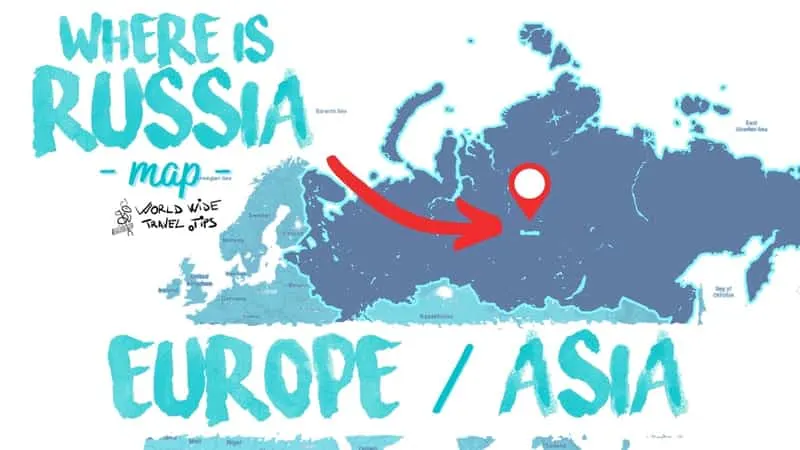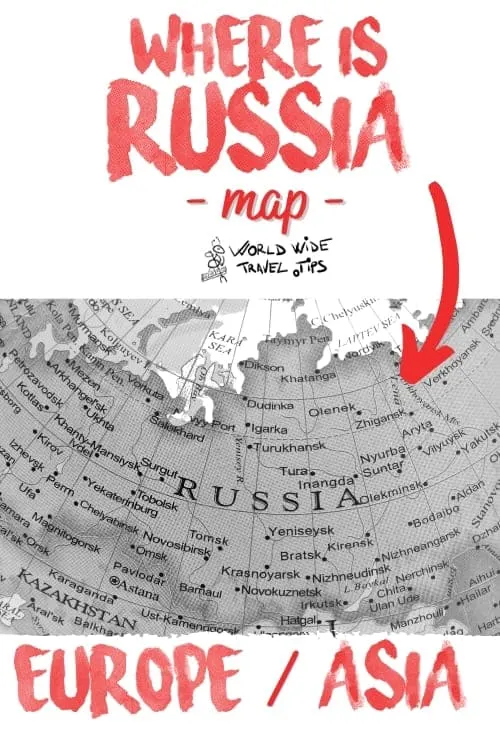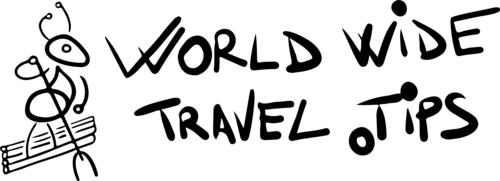A transcontinental country, Russia is a state located on more than one continent, so the answer to the question Is Russia in Europe or in Asia is that it lies on both continents, Asia and Europe.
According to the modern definition of Europe provided by the National Geographic Society, the border between Europe and Asia is the Ural Mountains line, from the Ural River down to the Greater Caucasus and from the Caspian Sea to the Black Sea.
On the other hand, we cannot place a country into two continents, so we have to follow the United Nations classification which says that Russia is located in Europe, more exactly in Eastern Europe.
Some of the following links are affiliate links. When you buy something using the retail links in our article, we may earn a small commission at no additional cost for you. You can read our full disclosure disclaimer and privacy policy.

Is Russia Asian or European
75% of Russia’s area is located in Asia, while 25% of the country is located in Europe, while 75% of people live in the European part of Russia.
Is Russia European or Asian country?
Everything about Russia is impressive and fascinating, starting from its surface ( more than 17 million square kilometres), to its people, culture, economy and of course its geography.
Here are some very interesting facts about Russia’s geography:
- Russia is split into two parts: the European Russia and Asian Russia
- Russia is the largest country in the world, 1.8 larger than the United States
- European Russia is smaller in the territory, but has a larger population, while Asian Russia is the other way around: large territory with fewer people.
- Across Russian territory you will find many different climate zones, from arctic to subtropics, depending on which part of the country you are travelling to
- The country is a federal republic with Vladimir Putin president
- The territory is split into 21 republics, 6 federal territories known as “krays”, 2 federal cities, which are Moscow and St Petersburg, 10 autonomous areas and just 1 autonomous region.
All these areas and districts and cities are integrated into one of the seven federal districts, which are: North-West, Central, Volga, South, Ural, Siberia and the Far East.
Each of these seven federal districts has its own capital but they are controlled by the central administration from Moscow.
Is Russia in Europe or in Asia?
The country occupies about 40% of the Europe continent area and it is the largest country in the world.
It has a total surface of more than 17 million square kilometres and a total population of 145 million people.
Out of this 145 million people, more than 100 million live in Western Russia ( in the European part).
Most of the Russian population are formed by Russians, but besides the Russians, there are another 120 other nationalities.
Stay safe while you travel
- medical safety abroad
- medical assistance including COVID-19
- emergency medical evacuation
- trip interruption -up to $5.000
- travel delay - up to $100/day
Some of these other 120 nationalities are quite small, with only a few hundred people, while others are largely reaching a few million.
Another interesting aspect to mention is that about 75% of the Russians lived in European Russia, while the rest of 25% lives in Asian Russia.
Now you know if is Russia in Asia or in Europe and how it is organised from a geographical point of view.
The largest cities from the Russian Federation are Moscow and St Petersburg, both cities being located in Western Russia.
Let’s move forward and find some more interesting things about the people who live in this impressive country and the languages they are using.
Most of the population of this European country are Russians but besides the Russians, there are other 120 ethnic groups, some of them with their own territories who speak more than 100 different languages.
Some of these groups are small, consisting of just a few hundred people, while others are quite large with millions of people each, like Ukrainians, Tatars, Bashkir, Chuvash, Chechens and Armenians.
Linguistically, we can split the Russia population into the following groups:
- Indo European group formed by East Slavic speakers and some other small people who speak other languages
- Altaic group – Turkish, Manchu-Tungus and Mongolian
- Uralic group- Finno-Ugric group and Samoyedic
- Caucasian group- Abkhazo- Adyghian and Nakhon-Dagestanian
The Indo European group
More than fourth-fifths of the population is made from East Slaves ( Ukrainians, Belarusians and Russians).
These people appeared in Europe from ancient times and were recognised as a distinct group – Slavs- between the 3rd century and 8th century AD and in the 9th century they created their first state.
Then it followed the Mongol invasions and Moscow gained more and more traction until it became one of the most important cities from the area especially during the Russian Empire.
An interesting fact is that even Russian are spread over such a large territory, the Russian language is quite homogeneous throughout the country.
The Altaic group
I think it is clear now if is Russia European or Asian country, but let’s discover what the Altaic group is about.
This group of people are made mostly from Turkic and are those people who live in the Central Asian republics, between the middle Volga and the southern Urals.
Altaic group of people comprise Bashkir, Chuvash and Tatars.
Part of the Altaic group are also those from the North Caucasus region, and here I am talking about Balkar, Karachay, Kumyk and Nogay, as well as some groups from Siberia: Altai, Khakass, Shor, Tyvans and Tofalar.
The Uralic group
This group is mostly formed by people who live in the Eurasian forest and tundra zones like Finnic people and Samoyedic.
Finnic people inhabit the European section, while Samoyedic groups are formed by Nenets from the tundra and tundra forest from the Kola Peninsula to the Yenisei.
The Caucasian group
Caucasian speakers are formed mostly by the population from North Caucasus like Abaza, Adyghian and Kabardian.
There are other few minorities in the country, mostly located in far eastern Siberia, but these 4 categories are the most important from a linguistic perspective.
Russia over time
Under Peter the Great, Russia was proclaimed an Empire in 1721 as this was the moment when it was recognised as a world power.
The Empire resisted until the beginning of the 19th century when various socialist movements appeared all over the country.
The last Russian Emperor, Nicholas II (1894 -1917) did not manage to prevent the events of the Russian Revolution of 1905 and this was the end of the Empire.
After the World War II, the Russian Soviet Federative Socialist Republic ( how was the country named by that time) together with Ukrain, Byelorussia and Transcaucasian Soviet Socialist Republics formed the Union of Soviet Socialist Republics (USSR).

Is Russia a continent or largest country in Europe
From all the countries member of this union Russia was the largest one and quickly it began to dominate the Union and the domination lasts for 69 long years, until 1991.
In June 1991, Boris Yeltsin was named the first elected president of independent Russia.
There were difficult times, as the economic and political collapse of the USSR led to a deep depression in the country.
Russia recorded a decrease of almost 50% in both GDP and industrial output between 1990 to 1995.
The lives of the Russians were marked by many changes, from privatisation and market and trade liberalisation to different reforms related to monetary policy.
By the time when USSR fall apart, Russia took up the responsibility of setting the Union’s external debts and this felt hard on people’s lives.
Most consumer price controls were eliminated and inflations rise up in the sky and everything culminated with the great Russian financial crisis from 1998.
By the end of 1999, president Yeltsin resigned and Vladimir Putin was appointed Prime Minister.
From here there was just a small step for Putin to become president, thing that happened in 2000.
Conclusion
Russia is a huge country with more than 200 million people split into the 4 categories listed above.
If I think better about its citizens and surface, as we already know if is Russia in Europe or in Asia, I can say that this country is like a family of countries of different ages and degrees of evolution.
I hope this article will manage to answer to your question if is Russia European or Asian country and also you discovered new and useful information about this magnificent country.



